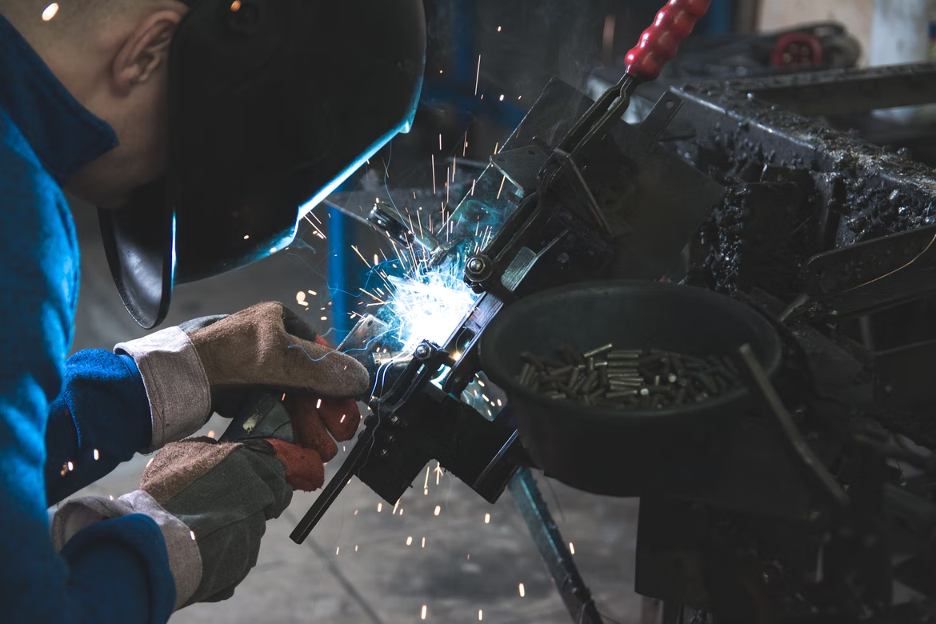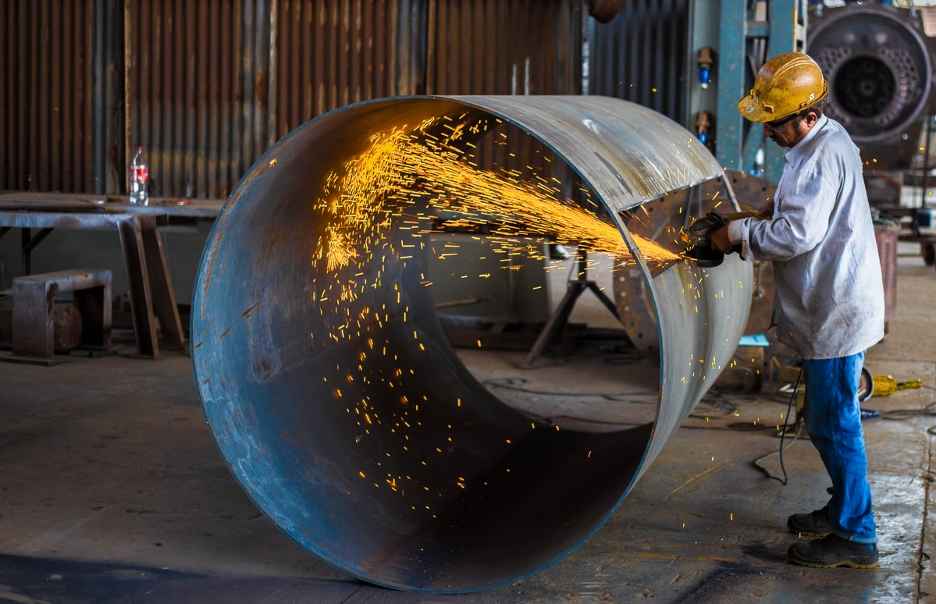How To Become A Fabricator? All You Need To Know

Fabricators work on creating the metal components for machines, engines, electrical equipment, tools, toys, building structures, faucets and household appliances. They may assist engineers in recommending the right materials and processes to develop a product, in addition to fabricating the components or item. Those that deal with heavy metals help facilitate structural steel erection in the construction and building industry.
This is a skill that is heavily needed across several sectors and industries; manufacturing, engineering, construction, automotive, aerospace, etc., and as such, it gives a great opportunity for a stable, yet evolving and stimulating career. Metal fabrication is a skill in strong demand that is only expected to increase with shortages nationwide, as reported in the Skills Priority List in June 2021.
We at 1300apprentice have assisted over 2000 students and apprentices to find their first feet in valuable careers through our VET apprenticeship programs.
If you’re interested in a career in metal fabrication, we’re here to help you with how to start.
What Certification Do You Need for Fabrication?
Fabricators fall under the umbrella of engineering. As such, you will need to complete an appropriate certificate iii in engineering through the Vocational Education & Training (VET) pathway, by a Registered Training Organisation (RTO) such as 1300apprentice.
At the 1300apprentice, we offer these two streams for aspiring fabrication engineers:
- Certificate iii engineering fabrication trade (light fabrication)
- Certificate iii engineering fabrication trade (heavy fabrication)
As with all VET certificates, you will need to complete an apprenticeship with a supervisor employer in your relevant industry.
Different Fabrication Roles
Many roles exist within both fabrication companies and within the wider realm of manufacturing, construction and automotive industries: from fabricating and shaping sheet metal to building larger metal components for cars or buildings. This might make it hard to know where to start, but these are the fabrication jobs that you can begin after successfully completing the above certificates:
- Sheet Metal worker (light fabrication)
- Metal template maker (light fabrication)
- 1st class welder (light and heavy fabrication)
- Boilermaker (heavy fabrication)
Fabrication companies often need to get as many hands as possible on a project. This means there is plenty of opportunity for cross-training and further development in roles in the future.
Sheetmetal Worker
So you’re asking, ‘what does a sheet metal worker do?’
Sheetmetal fabricators (or ‘sheeties’) work with steel, iron, aluminium or copper sheets to create, install, maintain and repair metal items. These metal workers require a steady hand and a lot of precision to work with thermal cutting, silver soldering and tig welding, to create metal products to the specifications of technical drawings. Most sheetmetal workers work together as a group, in a workshop.
A sheetmetal specialisation is a metal template worker. This is a role in which you create sheet metal templates for products that will be made again and again in the workshop.
Welder
Part of the process that all fabricators perform as part of their job is welding; which is combining pieces of metals together. You can specialise as a fabricator in a fabrication company, or as part of an engineering business, and work in a role that solely focuses on welding.
Boilermaker
Boilermakers are engineering tradespeople that work with larger steel and metal structures, such as boilers, tanks, vats, large containers and parts for ships. Boilermakers are additionally tasked with testing the boilers they construct to be well suited for the harsh high temperatures and conditions that they face. Along with their maintenance, installation and repair. Boilermakers also need to be quick to appear in the case of an emergency.
Undertaking a Fabricator Apprenticeship

Completing an apprenticeship is essential to fulfilling the requirements of your certificate iii in the engineering fabrication trade. A fabrication apprenticeship allows you to get the best of both classroom learning and practical on-the-job experience. This means that you are able to develop a knowledge base to guide you as well as practice and hone your skills in the workforce.
As a full-time apprentice, we also fully cover your fees in regards to training or WHS. We also pair you with a host employer to supervise you while you work, which means you start working almost immediately. Like standard employees, you can also expect to earn more as you work and study, with each new year you advance in your apprenticeship.
How long does a Fabricator Apprenticeship take?
4 Years
How much does a Fabricator Apprentice make?
The average earning for a fabricator apprentice in Australia is $25 per hour or $48,884 per year, according to Indeed, 2022. With more experience in your years of training, and when you complete your apprenticeship, you can expect to earn more.
Structural Steel and Welding Trades Workers earn an average base salary of $91,520 a year or
$1,760 in weekly earnings according to the National Skills Commission’s website.
Next Steps: Certificate IV in Engineering and/or Diploma of Engineering
After completing certification to become a fabricator, you may also undertake a certificate iv in engineering and/or a diploma of engineering to further refine your knowledge.
Find available jobs or forward us your resume today.




